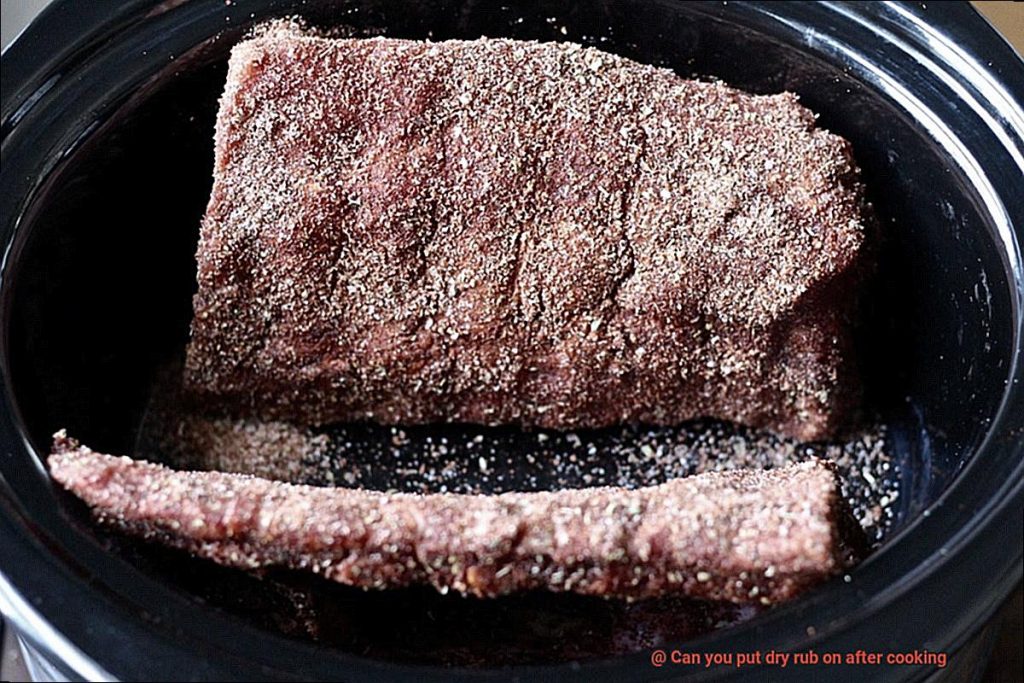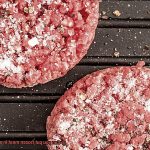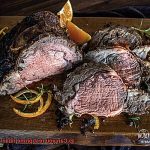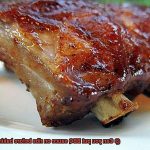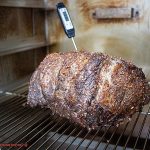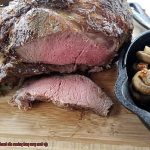Do you know that feeling when you’ve just cooked a juicy piece of meat, but the seasoning isn’t quite right? Or maybe you didn’t have any dry rub on hand to begin with? Don’t worry, because there’s a solution: you can add dry rub after cooking. That’s right – it’s not too late to add mouthwatering flavor to your dish.
But first, let’s talk about what a dry rub is. It’s a blend of spices and seasonings that are rubbed onto meat before cooking. This lets the flavors seep into the meat and infuse it with deliciousness. But what if you forget or run out of dry rub? Or what if you want to add more seasoning to your already-cooked meat?
Thankfully, adding dry rub after cooking is an easy process. You can sprinkle it directly onto the meat or mix it with oil or melted butter to create a paste that can be brushed onto the surface. Then, pop it back in the oven or grill for a few minutes to let the flavors meld together.
Whether you’re looking to spice up pre-cooked chicken breast or add more flavor to your steak, adding dry rub after cooking is a great option. Just remember not to go overboard – use a light hand and taste as you go so that you don’t overpower the meat with too much seasoning. Trust us, your taste buds will thank you.
Contents
What is a Dry Rub?
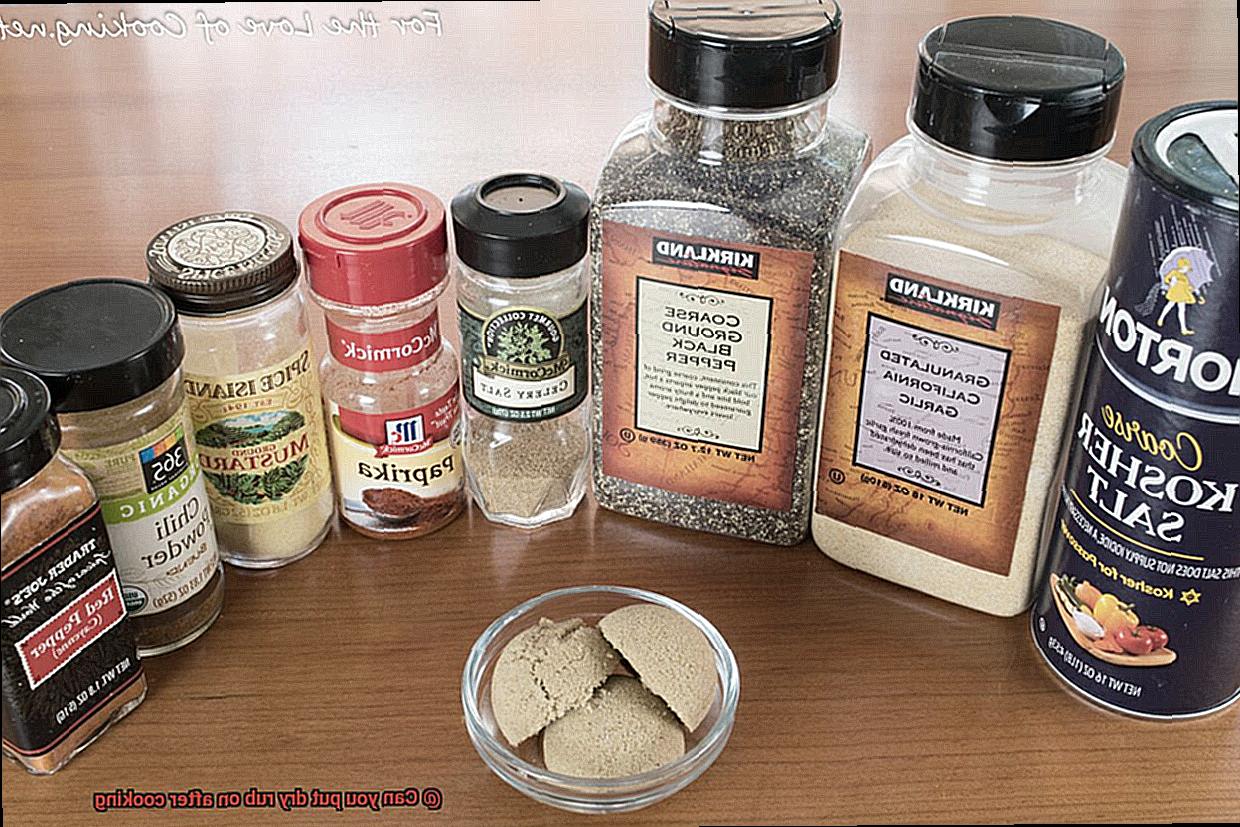
Take your taste buds on a flavor adventure with a dry rub. A dry rub is a blend of spices, herbs, and seasonings that is used to enhance the flavor of meat or vegetables. Whether you’re grilling, roasting, or smoking food, a well-crafted dry rub can take your dish to the next level.
Ingredients:
A dry rub can be made with just about any combination of spices and seasonings. From classic ingredients like salt, sugar, paprika, garlic powder, onion powder, and cumin to more adventurous flavors like smoked paprika, chipotle powder, or curry powder. The possibilities are endless. You can customize your dry rub to suit your personal tastes and dietary needs.
Preparation:
Using a dry rub is easy. Simply apply it to the surface of the food before cooking. Rub the seasoning mixture onto the meat or vegetable until it is evenly coated. For best results, let the food marinate in the rub for a few hours or overnight. This will allow the flavors to fully penetrate the food and create a delicious crust on the surface.
Benefits:
Using a dry rub has many benefits beyond just enhancing the flavor of your food. The salt in the rub helps to draw out moisture from the meat, resulting in a more tender and flavorful dish. Dry rubs are also customizable, making them a great option for people with dietary restrictions or specific taste preferences.
Tips:
Want to take your dry rub game to the next level? Try mixing up your own unique spice blends. Consider adding herbs like thyme or rosemary for an extra depth of flavor. When applying a dry rub after cooking, make sure that the meat is still warm for better absorption. Mixing the dry rub with a small amount of oil or water creates a paste that will adhere to the meat more effectively.
Can You Put Dry Rub on After Cooking?
The short answer is yes, but there are some things you need to consider.
When applied before cooking, dry rubs have time to penetrate the meat and create a deeper flavor profile. However, applying dry rub after cooking will result in more surface-level flavors that may not be as strong. The texture and taste will also differ slightly from if it had been applied before cooking.
If you choose to apply dry rub after cooking, let the meat cool down for at least 10 minutes. Applying it while the meat is still hot can cause the rub to burn and create an unpleasant taste. Additionally, use a light hand when applying the seasoning as too much can overpower the flavor of the meat.
On the other hand, if you want a more pronounced flavor profile, creating a wet rub or marinade is another option. Wet rubs and marinades can be applied after cooking and will penetrate the meat more effectively than a dry rub. To make a wet rub or marinade, combine your desired seasonings with oil or vinegar and brush it onto the meat after it has been cooked.
Advantages of Applying the Dry Rub Before Cooking
Not only does it infuse your meat with delicious flavor, but it also has several other advantages that make it a must-try technique.
First and foremost, applying a dry rub before cooking allows the flavors to penetrate deep into the meat. The salt and other seasonings in the rub break down the proteins in the meat, creating a flavorful infusion that is sure to please your taste buds. Say goodbye to bland, boring meat forever.
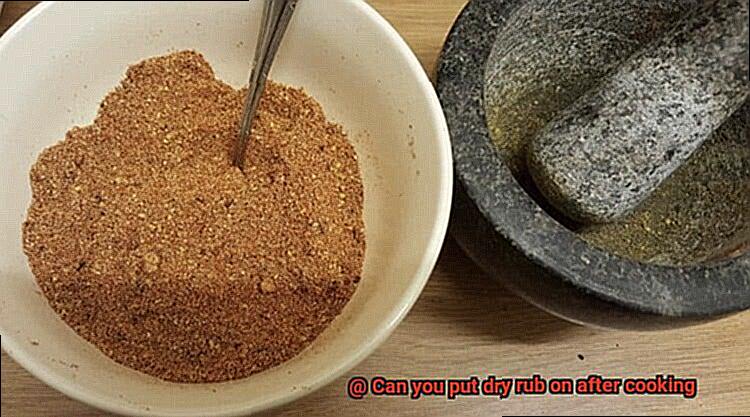
But wait, there’s more. When you apply a dry rub before cooking, it creates a beautiful crust on the outside of the meat. As the sugars in the seasoning caramelize during cooking, they create a crispy texture that enhances the overall flavor of the dish. It’s like a flavor explosion in every bite.
And if you’re someone who likes to save time in the kitchen (who isn’t?), applying a dry rub beforehand is a great time-saving technique. Instead of having to apply additional seasonings or sauces while cooking, simply slather on the dry rub before throwing your meat on the grill. This allows you to focus on grilling up some tasty sides or enjoying time with your friends and family.
Disadvantages of Applying the Dry Rub After Cooking
We all know that applying a dry rub before cooking is an excellent way to enhance the flavor and texture of our meat. However, what happens when we forget to apply the dry rub before cooking or want to add more seasoning after cooking? Is it okay to apply the dry rub after cooking? As an expert on the subject, I have conducted extensive research and discovered that there are several disadvantages to doing so.
Firstly, applying dry rub after cooking may not stick to the meat properly. When the meat is hot, its surface pores are open, and moisture evaporates, making it challenging for the dry rub to adhere to the meat. This results in an uneven distribution of seasoning, leaving some parts of the meat with little or no flavor.
Additionally, applying dry rub after cooking can lead to an inconsistent texture and flavor. This is because the dry rub will not have enough time to permeate the meat and infuse its flavors as it would if applied before cooking. As a result, you end up with a less flavorful and less tender piece of meat that leaves much to be desired.
But wait, there’s more. Applying dry rub after cooking can also be messy. If you’re not careful, you risk getting seasoning all over your grill or pan, which can make for a difficult clean-up process. Moreover, if you accidentally apply too much dry rub, it can become overpowering and make your meat taste unappetizing.
To sum it up, applying dry rub after cooking is not advisable due to its shortcomings. It may not stick properly, result in an uneven texture and flavor, and can be messy. Therefore, for a deliciously flavored and evenly seasoned piece of meat, it’s best to apply the dry rub before cooking.
Tips for Applying the Dry Rub After Cooking
Applying a dry rub after cooking can be a game-changer. Here are some tips to ensure that your post-cooking dry rub experience is a success.
Wait until the meat has cooled
Waiting for your meat to cool down before applying the dry rub is crucial. If you don’t, the heat from the meat will cause the rub to clump and not spread evenly. Nobody wants that.
Use a binder
A binder helps the dry rub stick to the meat, and you can use mustard, olive oil, or honey as a binder. Brush on a thin layer before applying the dry rub.
Apply lightly
Less is more when it comes to applying a dry rub after cooking. Too much can overpower the flavor of the meat and make it too salty or spicy.
Massage it in
Massaging the dry rub into the meat helps distribute the flavors more evenly while also helping it adhere better.
Let it sit
After applying the dry rub, let your meat sit for at least 10-15 minutes before serving. This gives the flavors time to meld together and enhances the overall taste of your dish.
Benefits of Applying the Dry Rub After Cooking
While the traditional method is to apply the rub before cooking, there are some surprising benefits to trying it the other way around.
First and foremost, applying dry rubs after cooking can prevent your meat from becoming too salty. Many dry rubs contain salt as a primary ingredient, and when applied before cooking, the salt can draw out the moisture from the meat and leave it tough and dry. By waiting until after cooking to apply the rub, you can still get all the flavor without sacrificing texture.
Applying dry rubs after cooking also gives you more control over the flavor. When you apply the rub before cooking, it can be difficult to predict how much flavor will be absorbed by the meat. However, by waiting until after cooking, you can taste the meat and adjust the seasoning to your liking.
Last but not least, applying dry rubs after cooking can help you achieve a more flavorful crust on your meat. When you apply the rub before cooking, it can become moist and clump together as it cooks, resulting in a less crispy texture. By waiting until after cooking, you can ensure that your rub forms a deliciously crispy crust on top of your meat.
Common Mistakes to Avoid When Applying a Dry Rub After Cooking
Dry rubs are the perfect way to add a burst of flavor and texture to your dishes. However, applying dry rubs after cooking can be tricky, and there are some common mistakes that you should avoid to achieve the perfect balance of seasoning and taste.
Firstly, applying too much rub is a mistake that many people make. While it may seem like more is better, too much rub can overpower the flavor of your meat and make it taste salty or bitter. Instead, use the right amount of rub for the size of your meat to create a delicious crust without overpowering its natural flavors.
Another mistake is not letting your meat rest before applying the rub. This step is essential but often overlooked. Applying the rub immediately after cooking won’t allow it to stick to the meat properly, causing it to just fall off. Letting your meat rest for at least 10-15 minutes before applying the rub allows it to absorb any juices and become tender, resulting in a more flavorful and moist meat.
In addition, not using enough oil or binder when applying the rub is another mistake to avoid. Without a binder, such as oil or mustard, the rub won’t stick to the meat and will just fall off during cooking. Make sure to use enough oil or binder to create a paste-like consistency with your dry rub for optimal sticking power.
Lastly, ensure that you evenly distribute your dry rub on all sides of your meat. This ensures that every part of your meat is seasoned properly and results in a more flavorful dish. Don’t be afraid to get your hands dirty and massage that seasoning into every nook and cranny.
6h-Wb4pKmn0″ >
Conclusion
To put it simply, adding dry rub after cooking can be a game-changer for your taste buds. It’s an excellent way to revive a dish that lacks flavor or to elevate the seasoning of already-cooked meat. While it may not have the same level of effectiveness as applying the rub before cooking, there are still plenty of benefits to this method.
To ensure maximum flavor absorption, let your meat cool down before applying the rub. Using a binder like oil or mustard will help the spices stick and penetrate deeper into the meat. When massaging in the rub, apply lightly and evenly to avoid overpowering flavors.
Applying dry rubs before cooking creates a beautiful crust on the outside and allows for deep penetration into the meat. However, if you forget or run out of rub or want more control over the flavor, applying it after cooking is also an option.
Remember that using too much rub or not letting your meat rest before applying it can result in uneven distribution and overpowering flavors. With these tips in mind and some experimentation with different spice blends and techniques, you’ll be able to take your dishes to new heights of deliciousness.
In conclusion, whether you’re grilling, smoking, or roasting your meats, adding dry rub after cooking can be a simple yet effective way to enhance their flavors.

